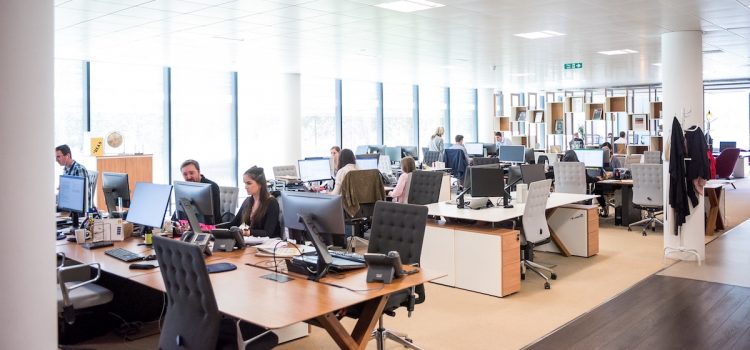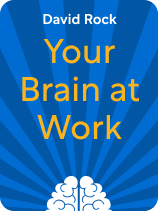

This article is an excerpt from the Shortform book guide to "Your Brain at Work" by David Rock. Shortform has the world's best summaries and analyses of books you should be reading.
Like this article? Sign up for a free trial here.
Can water cooler conversations be productive? How important are routines at work? Are flexible schedules good for productivity?
When employees don’t know what to expect, they expend valuable brain energy that could be used for productivity instead. Whether you’re a manager or not, you can contribute to creating mental comfort zones at work.
Read more to learn four ways to get and keep consistency in the workplace.
Consistency in the Workplace
To reduce potential threat responses in employees, Rock recommends that leaders stabilize as many aspects of a job as possible. The brain is in its comfort zone when it knows what to expect. Surprises are unavoidable on the job, whether it’s a glitch in a piece of equipment, a client responding unexpectedly, or any number of other everyday occurrences. That being said, the brain will have more energy to handle these obstacles if the supply isn’t exhausted by anticipating change or guessing what comes next.
| A Flexible Schedule Is an Unpredictable Schedule The brain’s adverse reaction to unpredictability partially explains why jobs that offer more flexibility end up making workers feel like they have less control. For example, if your job has an unpredictable travel schedule, it’s difficult to plan your life too far in advance. Employees who get to set their own hours often underestimate how long it will take them to do a task and consequently, make plans they can’t fulfill. Some experts suggest looking for jobs that value boundaries and balance rather than flexibility. |
Here are some practices you can implement to establish consistency in the workplace.
#1: Develop routines or templates for recurring tasks. The brain doesn’t have to expend a lot of energy on something that’s become a habit. For example, if calling customers is a frequent part of the job, design a script that employees can use to introduce themselves and the product. This way, employees don’t have to use energy to come up with a greeting for each phone call.
(Shortform note: Keep in mind that routines and templates should reduce mental energy for mundane and repetitive tasks; however, tasks that are complex or creative naturally require a lot of energy and don’t need to be as heavily regulated. Stoic philosopher Ryan Holiday argues that limiting workers’ autonomy is micromanaging. In Ego Is The Enemy, he explains that a leader who aims to control every action of their team members creates either workers who are resentful or workers who are dependent on corrections—both of which will lead to reduced productivity.)
#2: Show your face in meetings. Facial expressions and body language help people understand what we’re communicating more fully. Misinterpretations can prompt threat responses, which happens much more easily over email or the phone than in person.
(Shortform note: If you must communicate using text, the authors of Difficult Conversations—Bruce Patton, Douglas Stone, and Sheila Heen—propose delivering your message with as much context as possible to avoid miscommunication. State your intentions and your expectations for follow-up actions, and provide specific details for your reasoning.)
#3: Share goals and accomplishments across departments. When you send regular newsletters, emails, or other announcements reporting on the work of all departments, employees can get a sense of the goals the company is working toward and how their roles contribute. This information can help employees prepare for potential changes. For example, if a company wants to gradually implement a new kind of software, sharing the schedule of when each department will be updated gives employees more time to adjust.
#4: Create spaces where people can share their personal lives. One of the ways to reduce uncertainty at work is for employees to have an idea of who they work with. Providing a lounge area or a digital forum that allows people to interact casually increases the likelihood of employees forming positive relationships.
| Water Cooler Conversations Can Be Productive Studies have shown that building a sense of community can improve productivity and create a feeling of inclusion among coworkers. To create a sense of community, office spaces need to incorporate three factors: closeness, choice, and culture. If workspaces are missing any one of these, people tend not to engage in informal conversation and casual interactions. People tend to interact with others close to them. Researchers found that the further people’s offices were from each other, the less they interacted. Connecting different departments or floors through a digital space such as an announcement board or messaging program can help bridge physical gaps. People want the choice to interact. Open floor plans are meant to encourage conversation and collaboration, but many companies have found that people don’t use these spaces to work or talk together often. Researchers conclude that open floors don’t have enough privacy. Workers are likely to be interrupted or overheard. Separate spaces for work and community operate better, as employees can choose when to engage, and they have their own space for private conversation if necessary. The work culture must foster interaction. If casual interactions are treated as a waste of time by management, or employees see that few people participate in social initiatives, they will not get the sense that the company wants them to socialize. |

———End of Preview———
Like what you just read? Read the rest of the world's best book summary and analysis of David Rock's "Your Brain at Work" at Shortform.
Here's what you'll find in our full Your Brain at Work summary:
- How leaders can generate productive work environments
- How to schedule your day around your brain's energy levels
- Three steps to reactivate your creativity after a creative block






